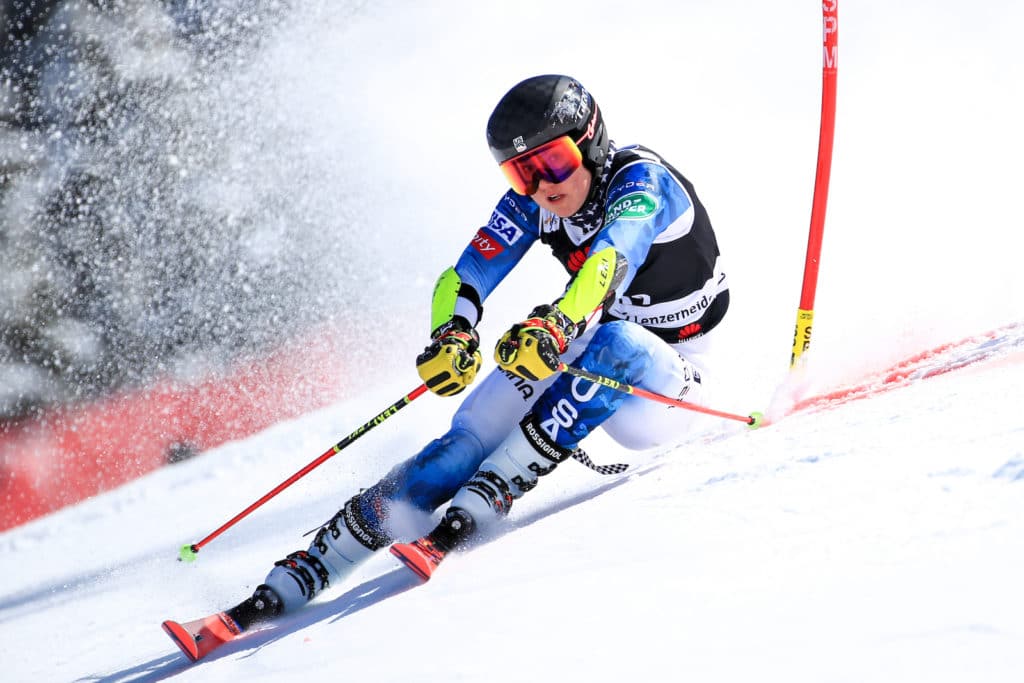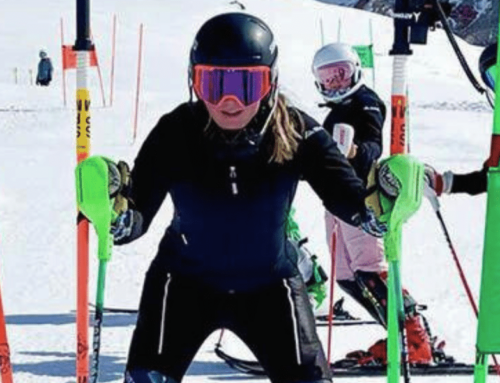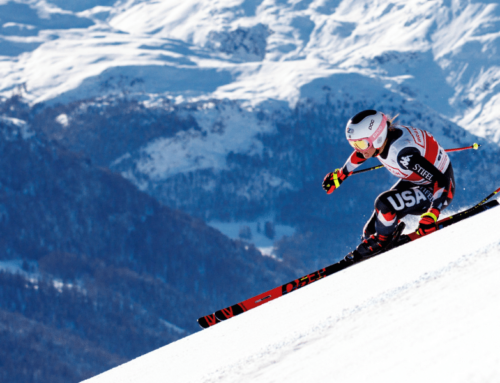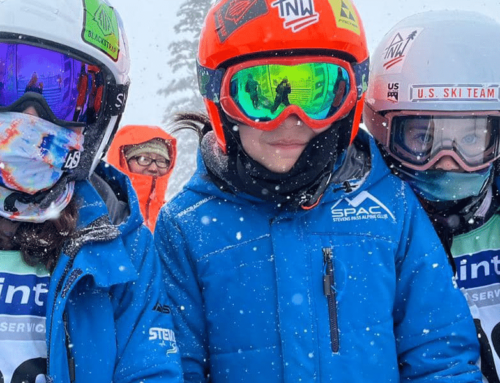On unknown Olympic courses, how will US experience — or lack thereof — be a factor?
The U.S. Ski Team tech squad that is headed to the Beijing Olympics will predominantly be comprised of racers without Olympic experience. However, considering the uncertainty, unpredictability and unknowns swirling around February’s Winter Games in China, inexperience is not necessarily a drawback.
Aside from Mikaela Shiffrin, Ryan Cochran-Siegle, and perhaps Tommy Ford — should he successfully rebound from tearing ligaments in his right knee — the tech team will consist of Olympic rookies. So, how will they prepare and ultimately lay everything on the line on unknown courses at the Chinese National Ski Center, a venue that World Cup skiers have yet to visit due to the pandemic?
Shiffrin has declared her intentions, ideally, to race all five individual events.

“After coming back from Soelden and winning the first race, it’s like the first check mark on my journey to hopefully be able to compete in every event at the Games,” Shiffrin said, as a guest on NBC’s Today Show as the network promoted their coverage of the Games with 100 days to go.
“It looks like it might be some difficult weather in Beijing, let’s see, but if there’s anything that I learned from South Korea, it’s that you have to roll with the punches,” said Shiffrin, who won giant slalom gold and alpine combined silver in PyeongChang four years ago.
Ryan Cochran-Siegle, who sped down a racecourse in Soelden last month for the first time since fracturing his neck at the Kitzbuehel downhill in January, targets qualification in GS and speed events in Beijing. The Vermont skier is trying to embrace the many unknown factors that await, particularly the unknown slopes.

“With where I’m at in my career and how I’ve developed, I honestly feel like that could be an advantage – on new slopes I’ve actually been able to perform well,” said Cochran-Siegle, who finished 11th in the 2018 Olympic GS. “Last year in Gardena was my first time racing the downhill and I was able to ski well,” he said of his runner-up finish at the Saslong Classic last December.
“I think it’s more of a disadvantage for the veterans who know the tracks,” he theorized, noting Swiss Beat Feuz, who has dominated familiar downhill courses over recent winters. “It’s a cool process where it’s a totally even playing field with everybody figuring it out for themselves.”
River Radamus, who nabbed a World Cup career-best sixth in the Soelden GS, is amped for what will be his first Olympic experience. The Colorado skier echoes similar sentiments as teammate Cochran-Siegle regarding the uncharted Chinese terrain.
“I really try to embrace the unknown – whether it’s bad conditions or an unknown race hill; I feel like if I can just embrace that, accept it, and make the most of it, I already have an advantage over the rest of the field,” Radamus says.

While Radamus aspires to represent Team USA on the Olympic stage for the first time, he delivered a superb performance while chalking up valuable international multisport-event experience as an 18-year-old at the Lillehammer 2016 Youth Olympic Games. Radamus won a triumvirate of gold medals in GS, super-G and alpine combined.
“The Youth Olympic Games were the first time that I really believed that I could become a professional ski racer, so it was a very crucial step in my career,” Radamus says.
“I didn’t have a good season going into those Games, so I used it as a reset point and realized this is an opportunity I’ll only get once in my life,” he recalled. “You just have to let everything out and it did me well there, so I’m going to try to keep that same mentality if I go to the Olympics.”
Youthful women’s tech team
Nina O’Brien, 23, Paula Moltzan, 27, and A.J. Hurt, 20 – all of whom tallied points at the Soelden opener – envision what their first Olympic experience might entail.
“There are a lot of questions about Beijing on both the socio-economic side and the snow conditions side – no one knows what to expect or what we’re in for,” said Moltzan, who informs that she will focus equally on GS and slalom this season. “They don’t get a lot of snowfall there so we expect it to be relatively dry,” she says of the Yanqing venue, located about 90 kilometers northwest of Beijing.

“It’s really cool that no one has been there – we’re all in the same boat, gonna figure it out as it comes,” said O’Brien, who matched her World Cup career-best with a ninth place result in Soelden. “It adds some excitement because no one knows who is fast on that track, fingers crossed for us, it should be fun.”
Hurt, who scored World Cup points across four disciplines last season, is also anticipating the great unknown of tackling China’s race slopes.
“It’s kind of crazy because it’s the first hill that will be all manmade snow, which is definitely new, but it looks sweet, it looks awesome,” she said.
The U.S. racers have viewed POV and drone footage of the Yanqing slopes, however most downplay the significance of it.
“I’m the type of person where the mental image that I build in my mind is not going to be the same as when you get there and see it in person,” said Cochran-Siegle. “For me, it’s about focusing on where I’m at today and coming up with a good program that will allow me to be successful at every start leading up to the Olympics.”
“We’ve seen lots of photos and video of the hill, but it’s really hard to tell,” Radamus says, about figuring out the terrain. “We don’t know what we’re stepping into – we don’t know anyone who has been there.”
A team effort on and off the slopes
For the U.S. Ski Team, the lead-up to Beijing is a complex team effort with multiple parts plotting travel and deciphering logistics, while adhering to the numerous countermeasures outlined in “playbooks” recently released by the International Olympic Committee and Beijing 2022 organizers.
Necessary tasks, calculations and preparation have been overseen by Alpine Director Jessie Hunt, with the assistance of men’s head coach Forest Carey and women’s head coach Paul Kristofic, and other coaches and team managers. Additional support has been provided by former USST sport director Luke Bodensteiner and Charlotte Moats.
“They are the ones that are facilitating all of the information and giving us what we need. Right now, we’re just trying to build a good foundation and work on our skiing,” Cochran-Siegle said.
O’Brien quickly refers to important guidance that she has received from a highly experienced teammate who has proven herself and knows a thing or two about thriving in the Olympic spotlight.
“One of the biggest things is probably something I’ve learned from Mikaela Shiffrin – it’s also a real mental battle, a fight the entire way through to keep calm and composed despite all the noise. … She has been very helpful about how to enjoy the process, and stay calm and collected as well.”
Follow Brian on Twitter – @Brian_Pinelli





















